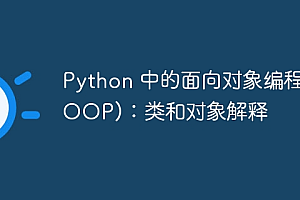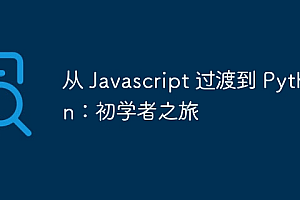
自从我开始编程以来,我主要使用结构化和过程范例,因为我的任务需要更实用和直接的解决方案。在处理数据提取时,我必须转向新的范式才能实现更有组织的代码。
这种必要性的一个例子是在抓取任务期间,当我需要捕获最初属于我知道如何处理的类型的特定数据时,但突然间,它在捕获过程中要么不存在,要么以不同的类型出现。
因此,我不得不添加一些 if’s 和 try 和 catch 块来检查数据是 int 还是 string …后来发现什么都没有捕获,没有等等。有了字典,我最终保存了在以下情况下一些无趣的“默认数据”:
好吧,令人困惑的错误消息肯定不能再出现了。
这就是Python 的动态性。变量可以随时更改其类型,直到您需要更清楚地了解正在使用的类型为止。然后突然出现一堆信息,现在我正在阅读如何处理数据验证,ide 可以帮助我处理类型提示和有趣的 pydantic 库。
现在,在数据操作等任务中,使用新范例,我可以拥有显式声明其类型的对象,以及允许验证这些类型的库。如果出现问题,通过查看更好描述的错误信息来调试会更容易。
派丹提克
所以,这是 pydantic 文档。有更多问题,咨询一下总是好的。
基本上,正如我们所知,我们从以下开始:
然后,假设我们想要从包含这些电子邮件的源中捕获电子邮件,其中大多数看起来像这样:“xxxx@xxxx.com”。但有时,它可能是这样的:“xxxx@”或“xxxx”。我们对应该捕获的电子邮件格式毫无疑问,因此我们将使用 pydantic 验证此电子邮件字符串:
|
1
2
3
4
5
6
7
8
9
|
from pydantic import basemodel, emailstr
class consumer(basemodel):
email: emailstr
account_id: int
consumer = consumer(email="teste@teste", account_id=12345)
print(consumer)
|
请注意,我使用了可选依赖项“email-validator”,安装方式为:pIP install pydantic[email]。正如我们所知,当您运行代码时,错误将是无效的电子邮件格式“teste@teste”:
|
1
2
3
4
5
6
7
|
traceback (most recent call last):
...
consumer = consumer(email="teste@teste", account_id=12345)
^^^^^^^^^^^^^^^^^^^^^^^^^^^^^^^^^^^^^^^^^^^^^^^
...: 1 validation error for consumer
email
value is not a valid email address: the part after the @-sign is not valid. it should have a period. [type=value_error, input_value='teste@teste', input_type=str]
|
使用可选依赖项来验证数据很有趣,就像创建我们自己的验证一样,pydantic 通过 field_validator 允许这样做。因此,我们知道 account_id 必须为正且大于零。如果不同,pydantic 警告存在异常(值错误)会很有趣。代码将是:
|
1
2
3
4
5
6
7
8
9
10
11
12
13
14
15
16
17
18
19
20
21
22
23
24
25
|
from pydantic import basemodel, emailstr, field_validator
class consumer(basemodel):
email: emailstr
account_id: int
@field_validator("account_id")
def validate_account_id(cls, value):
"""custom field validation"""
if value
<pre class="brush:php;toolbar:false">$ python capture_emails.py
traceback (most recent call last):
...
consumer = consumer(email="teste@teste.com", account_id=0)
^^^^^^^^^^^^^^^^^^^^^^^^^^^^^^^^^^^^^^^^^^^^^^^
...: 1 validation error for consumer
account_id
value error, account_id must be positive: 0 [type=value_error, input_value=0, input_type=int]
for further infORMation visit HTTPs:
|
现在,使用正确的值运行代码:
|
1
2
3
4
5
6
7
8
9
10
11
12
13
14
15
16
17
|
from pydantic import basemodel, emailstr, field_validator
class consumer(basemodel):
email: emailstr
account_id: int
@field_validator("account_id")
def validate_account_id(cls, value):
"""custom field validation"""
if value
<pre class="brush:php;toolbar:false">$ python capture_emails.py
email='teste@teste.com' account_id=12345
|
对吗?!
我还阅读了一些有关本机“dataclasses”模块的内容,该模块更简单一些,并且与 pydantic 有一些相似之处。然而,pydantic 更适合处理需要验证的更复杂的数据模型。 dataclasses 原生包含在 python 中,而 pydantic 还没有——至少现在还没有。





















